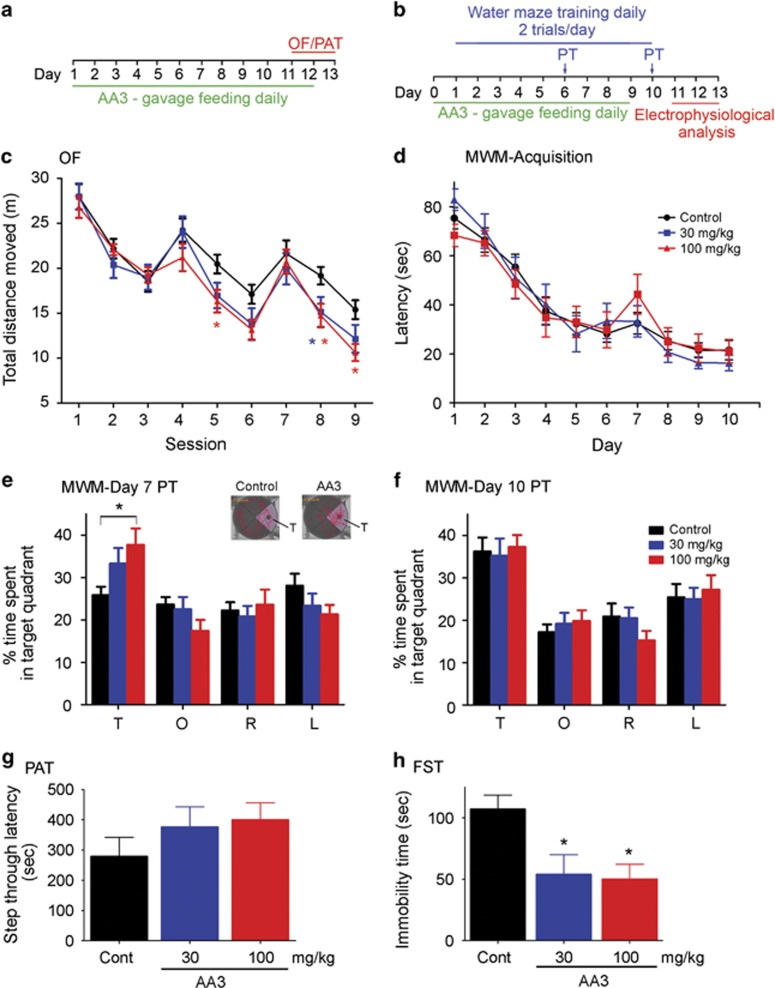Figure 4.
Anemoside A3 (AA3) improves learning and memory performance in mice. (a and b) Schematic diagrams illustrate the timeline of AA3 administration and behavioral experiments including OF/PAT (a) and MWM (b). (c) Effect of AA3 in the OF. Mice were administered AA3 for 10 days and then allowed to explore a novel arena for 3 consecutive days; each day, training lasted 15 min. The graph is expressed as the distance travelled within each 5-min session. n=18–24 mice per group. *Red, the difference between control and 100 mg/kg; *blue, the difference between control and 30 mg/kg at p<0.05 at indicated sessions. (d–f) AA3 improved spatial reference memory in the MWM test. (d) Escape latencies of mice during the course of training. (e) AA3-treated (100 mg/kg) mice learned the location of the submerged platform faster than the control mice. AA3-administered mice (100 mg/kg) acquired spatial memory on day 7 as reflected by the increased time they spent in the T zone (F(2,44)=4.629, p=0.015; *p<0.05, 100 mg/kg vs Control). T, target quadrant; L, O, R, the left, opposite, and right of the target quadrant, respectively. n=11–22 mice per group. Typical swimming traces on the day 7 probe trial showing the effect of AA3 (100 mg/kg) on spatial memory (upper-right inset). (f) The probe trial result revealed that the control mice acquired spatial memory on day 10. (g) AA3 did not affect the performance in the PAT. Mice were administered AA3 for 10 days before testing. n=10 mice per group. (f) AA3 exhibited an antidepressant-like effect. Mice, orally administered with AA3 for 2 days, were subjected to the FST. AA3 reduced the immobility time of mice. n=10 per group. *p<0.05 vs control (Cont).

